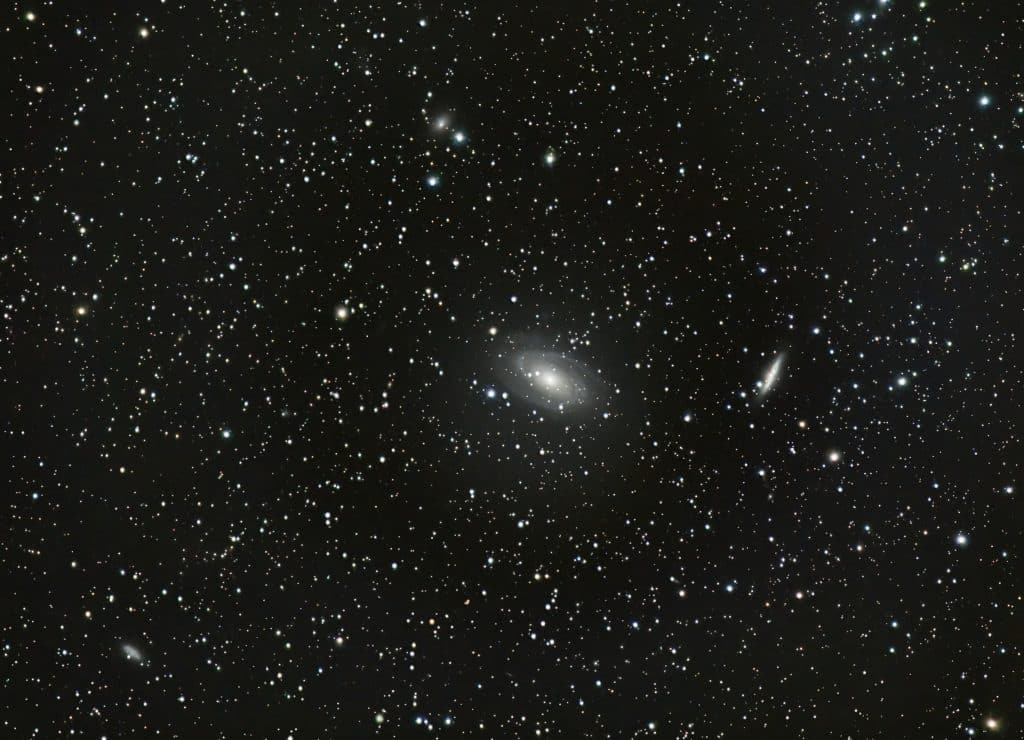One of the classic constellations of the night sky in the northern hemisphere is the big dipper known to astronomers as Ursa Major. In this region of the sky, there are a lot of deep sky objects to be found, from the Messier catalogue we could mention M81, M82, M97, and M101 to mention some of the more prominent ones.
M81 is a fantastic-looking spiral galaxy it is slightly inclined as seen here from Earth. with the 600 mm Tamron lens I was able to resolve the galaxy very nicely and with the neighbouring galaxies M82, NGC 2976 and NGC 3077 showing up nicely around the edges of the image.

M81 or just Bode’s galaxy is a galaxy which sizewise is comparable to the Milky Way galaxy. It is approximately 95000 light-years in diameter and the distance between Earth and Bode’s galaxy is approximately 11.74 million light-years away. What does that mean? Well, that means that the light I recorded with my camera was emitted 11.74 million years ago. The galaxy in the lower left-hand corner is approximately 13 million light-years away.
Compared to previous images that I have displayed this one has been edited in a special astrophoto software called PixInsight it has been an absolute pleasure to work with, it runs very smoothly and the software is doing a fantastic job on the images from stacking to post-processing.
M81 – Facts
M81 is a spiral galaxy of class Sb which is a spiral with a prominent bar through the center. The galaxy is known as Bode’s galaxy after the scientist who discovered the galaxy, besides the spiral arms and the bar it has a very bright bulge.
M81 is located in the constellation of Ursa Major making it circumpolar here in Denmark – this means we can see it all year round. The distance to M81 is around 11.74 million light-years. The size of M81 is comparable to the size of the Milky Way, which is approximately 95000 light-years in diameter.



